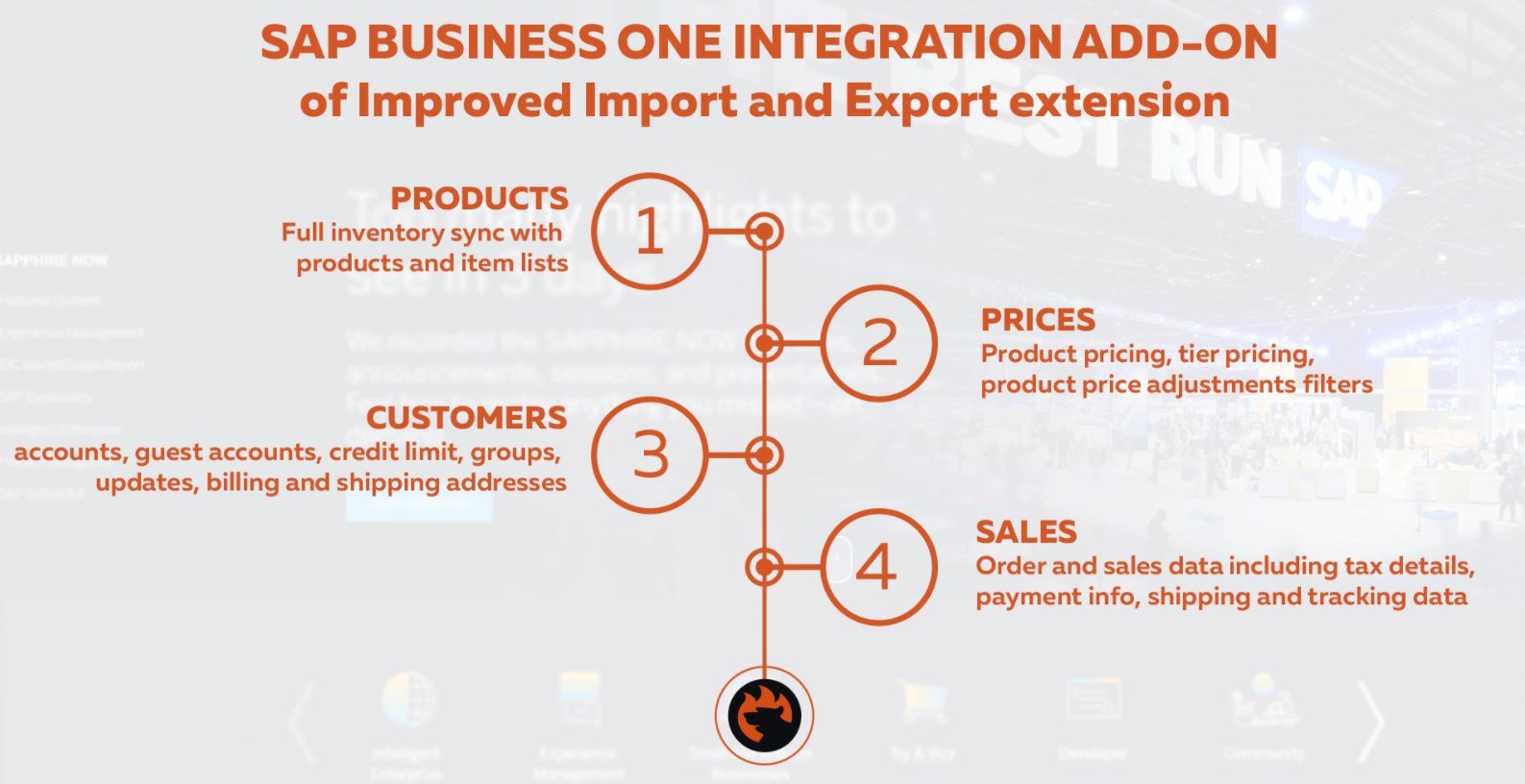The Biggest B2B Ecommerce Trends to Prepare for the Digital Commerce Era

Ecommerce has seen tremendous growth over recent years. As technology evolves and customer preferences change, B2B ecommerce companies are transforming their approach to managing their business. In the coming years, new ecommerce trends will require business-to-business sellers to quickly adapt to the changing environment and deliver personalized experiences to their clients. For modern B2B buyers, online shopping is a norm, and they are looking for the same experience when making purchases for their companies. The outbreak of coronavirus pandemic added to the changes in B2B customers’ purchase behavior, motivating vendors to look for new ways to meet buyer expectations and adapt to the transforming business environment.
This article sheds light on the leading trends that will shape the B2B ecommerce sector in the nearest future and presents ideas on how to address the main challenges in the unfolding digital transformation. It also describes the core features of the Magento Commerce B2B program as a solution that allows B2B companies to modernize their business model and meet growing customer demands.

Table of contents
Magento 2 Commerce: a Powerful Solution for B2B Businesses
Magento has proved its position as a leading e-commerce platform by providing top-notch functionality and unique customer experiences. After the release of the platform’s second version, online merchants got more possibilities for managing all aspects of their e-commerce sites and meeting customer expectations. Due to the availability of two Magento editions – Open Source and Commerce (formerly known as Magento Community and Magento Enterprise) – the platform can be adapted by businesses of different sizes. While Open Source provides a free self-hosted solution with essential functions and flexibility to integrate with required third-party modules, the Commerce Edition brings a bunch of unique features and advanced possibilities for customization.
While Magento 2 Open Source and Magento 2 Commerce share lots of functions and are both based on the same open-source technologies, the latter has a wider toolset out of the box and provides some superior characteristics. Commerce Edition provides users with enhanced content management tools, including page hierarchy, dynamic blocks, banners, Page Builder, and Content Staging. The enterprise edition of Magento 2 also allows leveraging advanced marketing tools, such as Product Recommendations powered by Adobe Sensei, related product rules, gift cards, reward points, customer segmentation, Google Tag Manager, etc. Other outstanding features of Magento 2 Commerce include Visual Merchandiser, extended tools for managing RMA requests, and the possibility to use store credits and customer attributes.
In addition to the features mentioned above, Magento 2 Commerce introduced its B2B Module with integrated B2B functionality. Magento 2 Commerce B2B is a free extension developed for merchants who work with other businesses in the ecommerce sphere. The Magento B2B module provides the following functions:
- Company Accounts. This feature allows creating complex organizational hierarchies with multiple members who have particular roles and different permission levels.
- Shared Catalog. With this instrument, it becomes possible to create custom catalogs with different prices and manage customers’ access.
- Negotiable Quote. By implementing the request for quote feature, B2B merchants can streamline negotiation over product and shipping prices before placing an order and agree on more favorable pricing with their clients.
- Quick Order. This function provides customers with an option to order multiple items at once by entering their SKUs, which allows for friction-free ordering.
- Requisition List. Another enhancement to the ordering process on a Magento 2 site that allows customers to create lists of frequently purchased products and use them for fast order placement.
- Company Payment. Another beneficial feature of Magento 2 B2B that enables ecommerce merchants to implement the most convenient payment methods and manage access to them.
- Company Credit. This tool allows B2B companies to use the Payment on Account method when paying for their purchases up to the specified credit limit.

Another significant improvement brought by Magento 2 Commerce Edition is scheduled import/export that allows running data transfers in the specified time intervals and using Cron job scheduler for required configurations. However, this functionality has limitations when addressing some importing and exporting needs and doesn’t offer the same flexibility as the tools available with the Improved Import & Export extension and its add-ons.
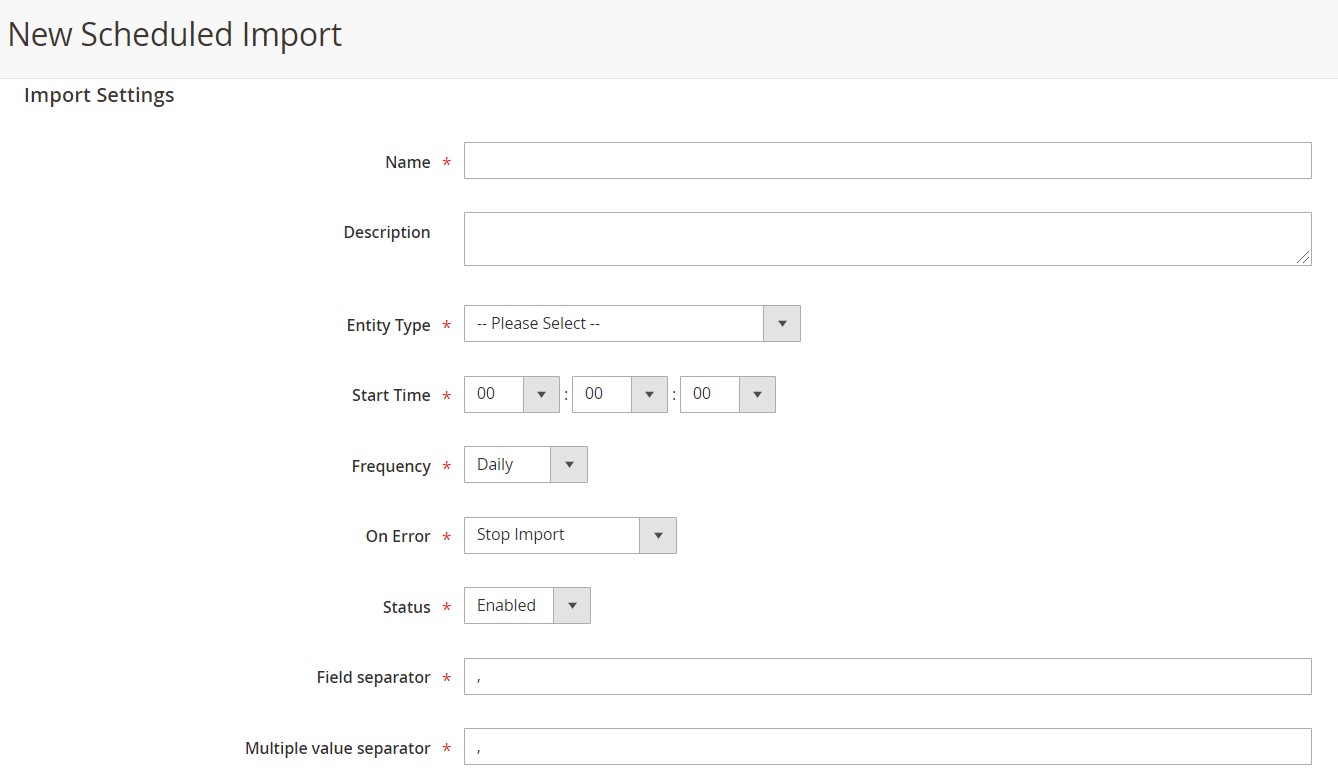
It is worth mentioning the B2B import and export add-on for Magento 2 among other tools associated with Improved Import & Export. It is based on the Improved Import & Export functionality that allows processing entities implemented into Magento 2 Commerce and Cloud with the native B2B extension. The add-on is focused on the idea of seamless import and export of the following data sets to and from Magento 2:
- Companies – full company structure, including customer roles and company administrator account.
- Quotes and negotiable quotes (abandoned carts) – cart composition, discounts, and special prices.
- Requisition lists – full product lists with required quantity amounts.
- Shared catalogs – custom product listings per customer group with special prices.
The B2B add-on also helps Magento 2 admins operate large amounts of data and allows integration with any CRM, ERP, or other backend systems.
The Changing Landscape of B2B E-Commerce
Over the last few years, B2B has become the fastest growing segment of ecommerce and will maintain its growth during the coming years. The overall volume of business-to-business transactions exceeds those in the B2C sector since it involves relations between various parties, including manufacturers, wholesalers, and retailers, in the supply chain. According to some reports, B2B ecommerce has surpassed B2C in overall revenue by 2.5 times in 2020. The by Forrester Research claims that the share of B2B ecommerce in the United States will reach $1.8 trillion by 2023, making 17% of all B2B sales in the US.
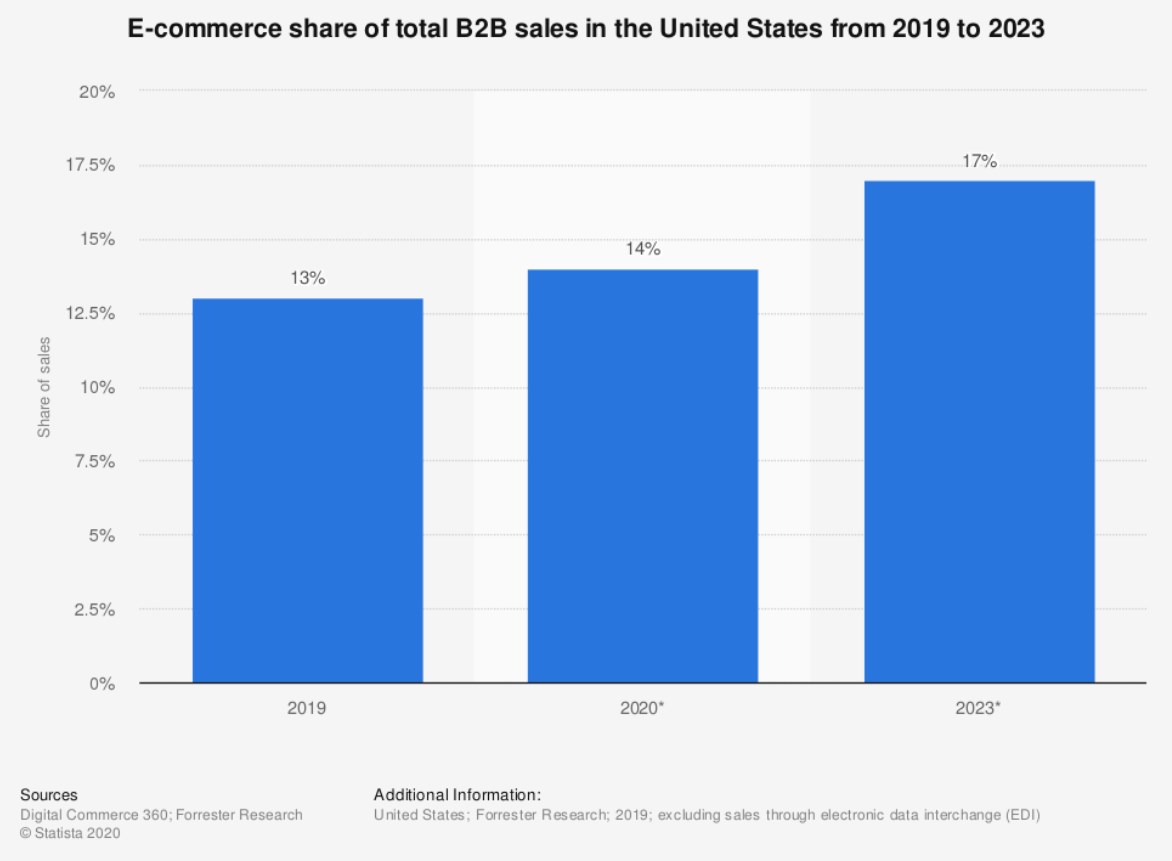
The COVID-19 pandemic has disrupted established strategies of B2B businesses across the world, creating new challenges in supply chain management and obliging companies to take appropriate measures for ensuring safety for both workers and customers. The health crisis created changes in the . The effect is seen in cutting down spending and increased caution when making purchase decisions. The growing role of new generations in the companies’ decision-making process also creates the need for making adjustments in a B2B business model.
The changes in the business environment make it critical for B2B businesses to adopt digital commerce strategies to meet customer requirements. While pandemic creates difficulties for traditional businesses that operate mostly via brick-and-mortar stores, it might open new opportunities for companies that choose digitization as their leading strategy. By redirecting investment flow towards technological advancement and focusing on digital sales channels, B2B companies should see an increase in their online sales.
Economic uncertainties motivate business owners to develop new B2B strategies centered around technology and digital marketing. Gartner Digital Markets shows that 61% of interviewed decision makers started spending more on technology after the coronavirus outbreak. A shift in business focus on the acceleration of existing customers rather than acquiring new leads also creates motives for technological changes.
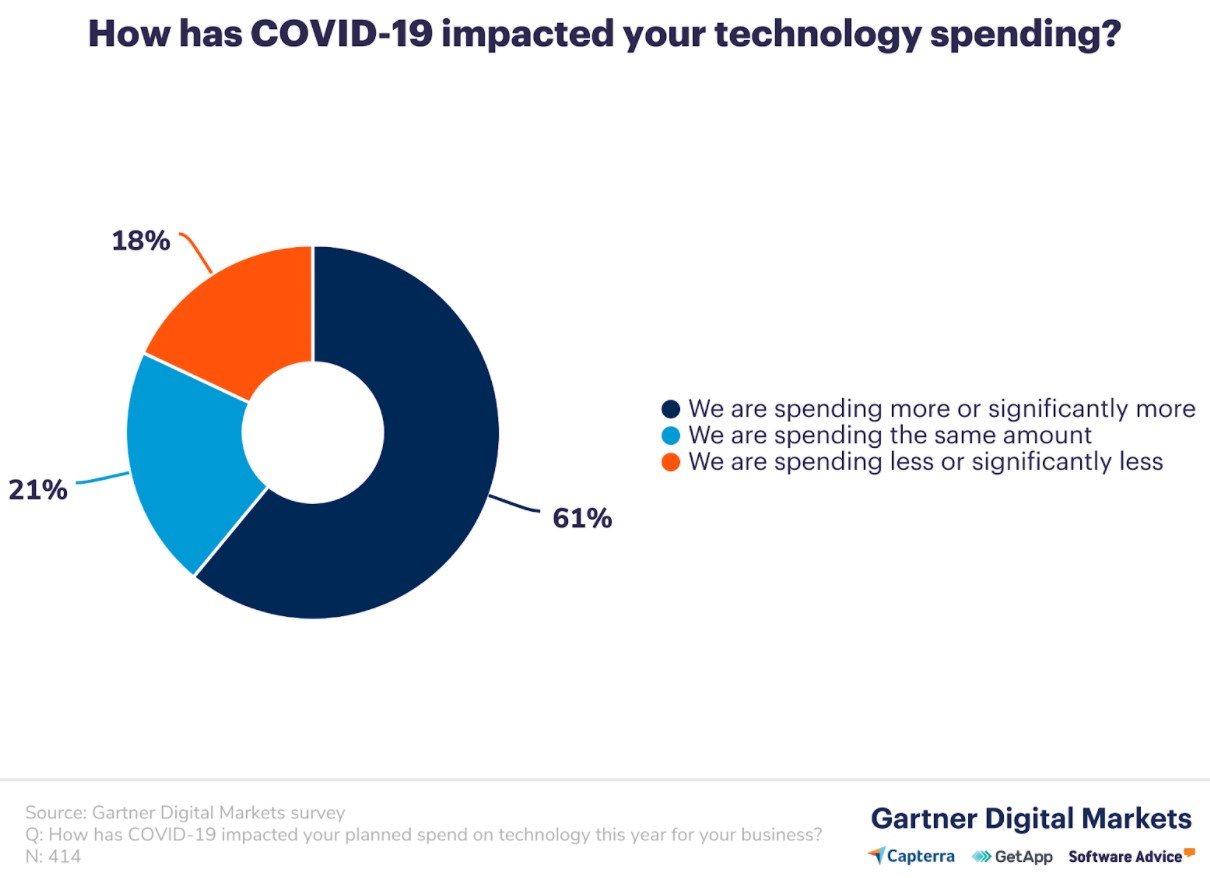
In view of digital transformation and other changes experienced in the business environment, it is important to highlight key B2B ecommerce trends to understand how to turn the current crisis into an opportunity and prepare your business for long-term growth.
B2B Ecommerce Trends: What to Expect and How to Get Ready for the Change
-
Digital transformation
The gap between B2B and B2C industries gets smaller, making B2B ecommerce business owners and marketers find solutions for increasing customer engagement and use sales techniques resembling those applied in the B2C market. B2B buyers are looking for more opportunities to shop online, making it crucial for B2B businesses to expand their online presence and move towards the digital transformation.
The global outburst of the recent pandemic created new challenges for B2B sellers, manufacturers, and distributors. It also resulted in shifts in consumers’ preferences and technologies they want to use in their customer journey. If B2B businesses want to survive the competition, they should reconsider their digital strategies and transform interactions with their customers. According to the , three out of four respondents from B2B decision-makers believe that a mostly remote sales model is more effective in maintaining existing customer relations and reaching out to prospects in the long term. The figures from the same survey show that about 80% of B2B businesses are eager to adjust their go-to-market strategy to the changing environment caused by the COVID crisis.
Another report by McKinsey provides some successful examples of B2B companies that managed to increase their sales and reduce costs after implementing digital tools in the interactions with their clients. However, adapting one’s B2B business model to the emerging digital commerce era requires a well-thought-out strategy and prudence when developing a digitization program. Since digital sales channels are growing in popularity, B2B ecommerce businesses need to quickly adopt new technologies, such as artificial intelligence, digital event platforms, chatbots and virtual assistants, cloud-based systems, as well as new tools for team management.
Using artificial intelligence allows companies to make more accurate forecasts and revenue predictions and analyze accounting data. AI-powered chatbots and virtual assistants provide rapid help to customers and decrease the workload of sales representatives. Another technology for addressing changing customer expectations is cloud. Cloud ecommerce solutions allow keeping a record of customer interactions and leveraging this information to improve business efficiency and user experience.
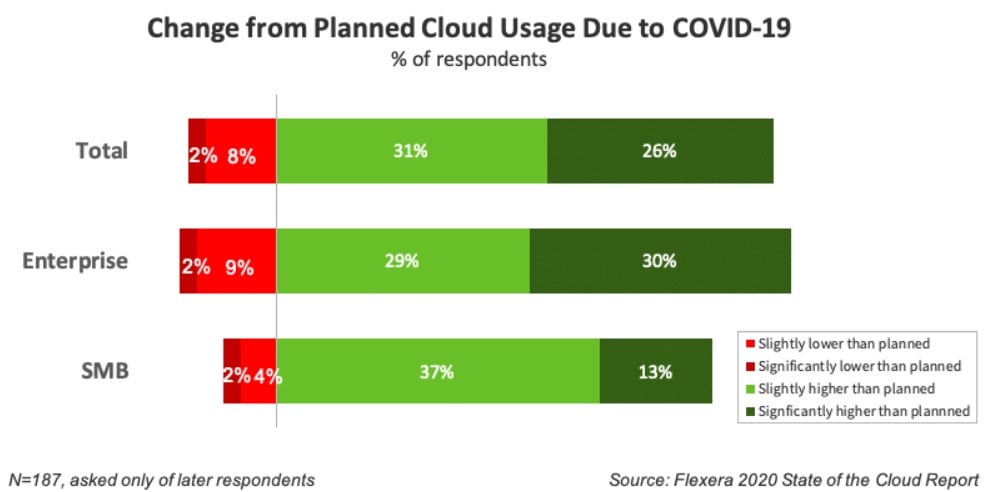
Magento is a leading solution for the digitization of the shopping experience. The platform provides robust features out-of-the-box and enables ecommerce merchants to apply rich customization options to fine-tune their sites’ look and feel. A vast ecosystem of third-party extensions and partners provides sellers with unlimited possibilities for building an online store adjusted to specific business requirements and expanding their reach to both B2B and B2C clients. By building your online shop on Magento 2, you can fully embrace the business agility and go to market faster, making your way to digital transformation and innovation.
-
Millennials as a driving force of B2B ecommerce
Gen X and Gen Y, also known as millennials, became key players and decision-makers in ecommerce. People from these age groups were born when the internet became a part of one’s daily life. It led to changes in the buyer demographics and a wider spread of digital technologies in the purchasing process. The millennial generation prefers buying online and looks for maximum convenience and extensive information about products and services when making their purchases.
According to the , 73% of B2B buyers belong to the millennial generation. The decision-making power of millennials has more influence on the B2B commerce industry as they dominate the workforce globally. Gens X and Y are looking for the same user experience when making purchasing decisions for the companies they are used to as consumers.
The changing buyer demographics create new opportunities for B2B ecommerce sellers and challenge their adaptability to new customer preferences. If a business wants to win customer loyalty in these circumstances, it should look for new ways to meet customer expectations. It is mostly related to improving customer satisfaction from searching for relevant information and making transactions and navigation on the vendor website. To keep up the pace in the changing ecommerce environment, B2B business owners should pay attention to the availability of in-depth product information on their sites, interactive tools for engaging buyers, accessibility of online customer support and their fast response, and convenience of shopping on any device.
-
Personalization of customer experience
When it comes to finding ways of enhancing user experience in the buying journey, personalization is the key. As some surveys show, more than half of online buyers are willing to pay more for a personalized shopping experience. Other studies claim that customers would provide their personal data in exchange for a more personal approach when buying products or receiving services. Shoppers from millennial generations and younger audiences are the ones who consider personalization as one of the main factors in making purchasing decisions.
If a B2B ecommerce business wants to excel in the competition, it should apply particular techniques for increasing the level of personalization. These methods might include exclusive offers tailored to a customer’s interests, personalized product recommendations, and usage of communication means preferred by a client.
Another possible solution is building an app designed for your B2B business. Such applications are used to improve the shopping experience, e.g., by letting users do a quick checkout with a , and streamline transaction processing. Besides, these apps can be used for creating loyalty programs to reward customers and motivate them to make more purchases. At the same time, business owners get a chance to gather valuable customer data and get a deeper understanding of their clients’ purchase behavior and preferences. By analyzing collected information and using it when developing sales and marketing strategies, B2B company owners and managers can establish stronger relationships with their clientele in the long run and deliver tailored experiences.
When it comes to customer segmentation and personalization, Magento Commerce provides advanced functionality for setting up targeted promotions based on customer groups. When dividing customers into segments, store admins can leverage various parameters, like address, birth date, gender, order history, and more.
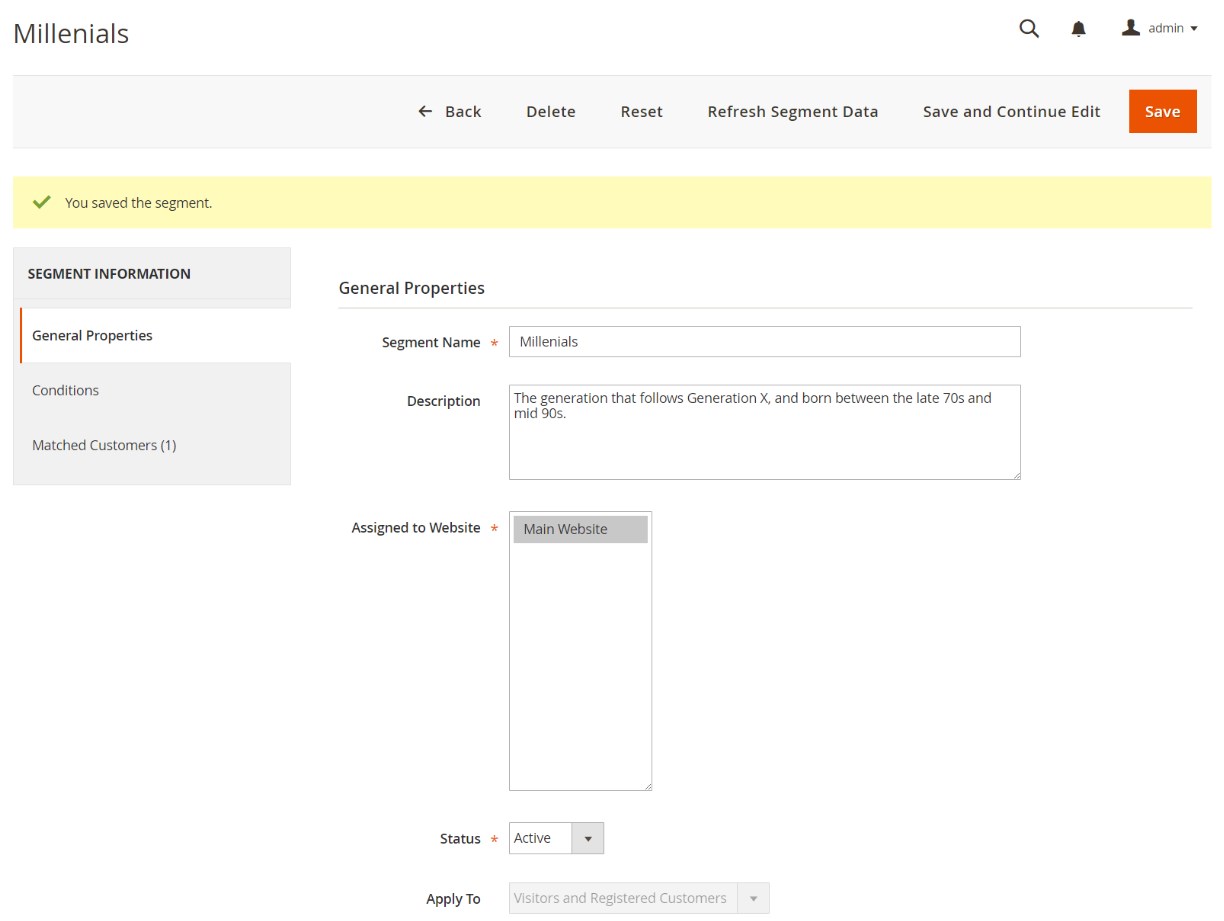
Magento 2 Commerce allows for an advanced level of personalization by engaging customers with individual product recommendations. The feature is based on artificial intelligence and machine learning algorithms powered by Adobe Sensei. The innovative technology provides merchants with an in-depth analysis of customer behavior, ensuring highly targeted promotions and reducing manual work. Sellers can utilize recommendations based on buyers’ interactions with the storefront and item-based recommendations related to product information.

Other advanced marketing tools available with Magento 2 Commerce include related product rules. This feature allows creating blocks with related products, up-sells, and cross-sells, displayed on the storefront according to the specified rules. Store managers can define conditions for related product rules and specify products that will appear in the block after matching the specified conditions. For a more personalized approach, each product rule can be associated with a customer segment.
-
B2B buyers prefer remote interactions
Most modern B2B buyers, with millennials making a significant part, prefer doing a thorough research of available options in the market before making a purchase. These customers rather set their own criteria for the information search than contacting a seller and find their own means for collecting required data. research claims that 74% of business buyers start their purchasing journey by conducting online research.
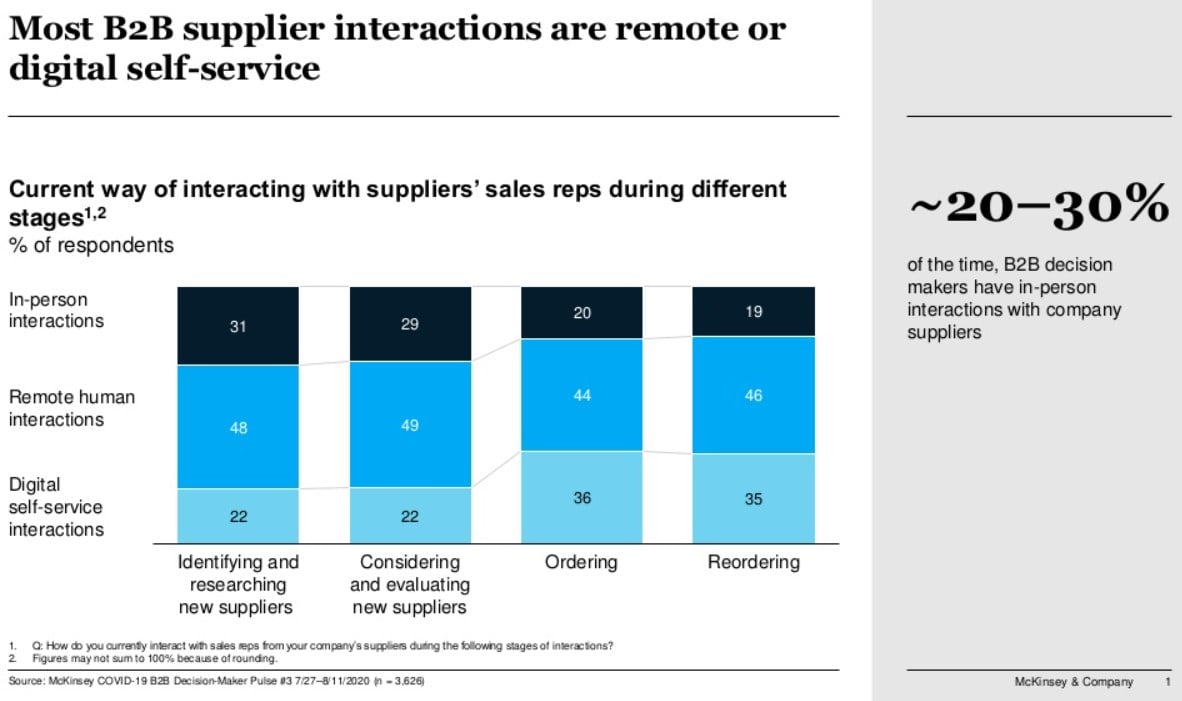
Since fewer customers are willing to talk to salespersons or contact vendors to get product details, in-person sales activities get replaced by digital selling tools. B2B buyers turn more to internet search tools, seller websites, and social media to get as much information about a product or brand. Hence, they expect suppliers and vendors to provide detailed product descriptions and clearly articulate their competitive advantages.
To meet customer needs for more accurate information and increase confidence in their purchase decisions, business owners need to review their marketing plans. The quality of product information and the availability of various tools that help B2B consumers in their research can positively influence buying decisions. These tools might include related product suggestions, detailed descriptions of products and services, image galleries, how-to videos, downloadable documentation, as well as rating and reviews from other customers.
Another solution for providing customers with the answers to the most common questions is creating a content library. After including informative content in your knowledge base, like, e.g., case studies, research articles, technical specs, white papers, etc., your sales reps can share them with prospective clients.
However, helpful content is not the only aspect you should focus on if you aim to improve your customers’ buying process. Since more and more business customers prefer remote interactions over in-person communications, providing them with digital self-service tools efficiently addresses their expectations of having more control during their purchase journey.
One more solution for improving customer experience and increasing their satisfaction from communicating with a vendor is real-time customer support. Since a modern B2B buyer tries to reduce time spent on reaching out to a salesperson, implementing a live chat on a seller’s site can be the easiest but efficient option.
Magento 2 Commerce Edition brings some significant content management improvements. First, it introduces a page hierarchy that allows store owners to make their content pages more organized by adding pagination, navigation, and menus. The hierarchical structure on a page helps customers find required information faster, which significantly improves the user browsing experience on a website. Other unique content elements available with Magento 2 are dynamic blocks. With this advanced tool, store admins can create interactive content based on promo rules and customer segments. This way, you can make your marketing efforts more personalized and target particular website visitors.
The platform’s Page Builder brings other vital enhancements related to content management on a Magento 2 site. The Page Builder drag-and-drop tool enriches your website pages with the elements from the four available categories: Layout (includes rows, columns, and tabs that are used as containers for other content types), Elements (contains text, headings, buttons, dividers, and HTML code snippets that can be added to created content), Media (selection of images, videos, banners, sliders, and Google Maps for including in the page layout), and Add Content (advanced content options, such as static blocks, product lists, and product recommendations). The Page Builder’s user-friendly interface helps users streamline content updates and create content-rich pages without coding skills.

Since customer support is a vital part of the buyer lifecycle, Magento 2 ensures seamless implementation of customer support services on a merchant’s website. Commerce Edition of Magento 2 also provides advanced possibilities for shopping assistance. Store admins can manage shopping carts of registered customers from the backend and change the cart contents on the request. Besides, Magento Commerce brings customer interactions to another level by supporting the request for quote functionality and allowing for price negotiations with a streamlined workflow.
-
Continuous customer involvement via content optimization and SEO
As the importance of engaging content in the customer buying journey grows, many B2B companies focus on improving their content and optimizing it for search engines. One example of a valuable copy is long-lasting content that provides buyers with a deeper understanding of the researched topic. It includes user manuals, help documentation, guides, and other information sources that can also be a part of the knowledge bases mentioned above.
Another source of information that helps B2B buyers make thought-out purchasing decisions is a niche blog, which also provides valuable content for web crawlers. Audiovisual content and brand stories should also be considered when devising one’s content strategy adapted to new demands.
However, creating a self-service portal and filling it with articles and documentation might not have due efficacy if the content is not searchable. This is where B2B business owners should focus on optimizing their content in SEO terms. Adding high-quality backlinks, optimizing URLs, and improving site speed is essential for improving your website’s position in Google search results, driving more traffic, and gaining customer loyalty.
Magento 2 provides several useful features for optimizing a website in terms of SEO out of the box. Merchants who run their ecommerce sites on the platform can easily add meta data to product and category pages per each store view, include canonical tags in the page configuration, pagination, and layered navigation, and set SEO friendly URLs. It positively affects how search engines index your website and improve your ranking in Google search results.
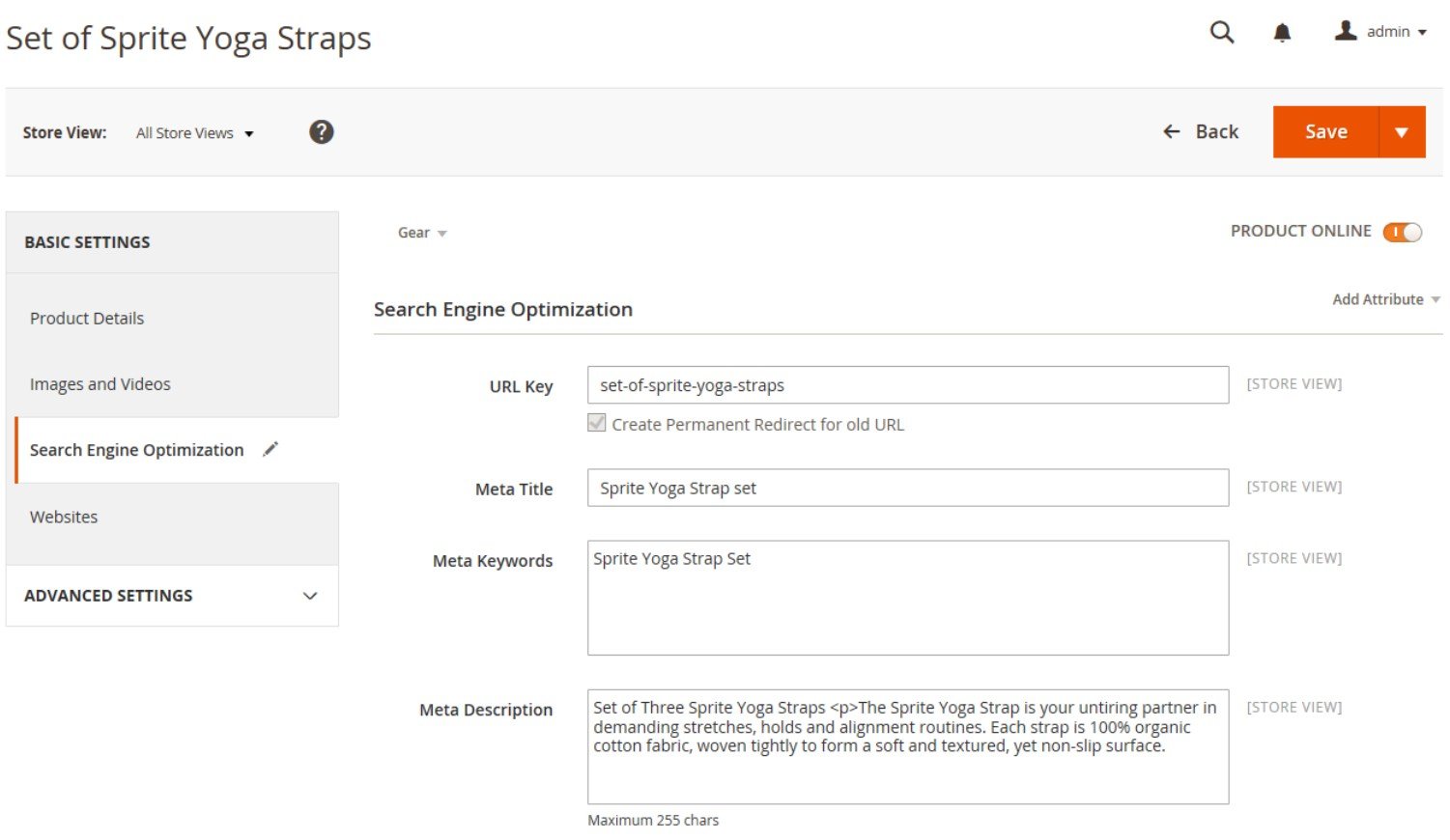
Other default Magento 2 SEO features include XML sitemap optimization (including the ability to set the frequency of the updates and priority for each type of content separately); robots.txt file integration; schema.org integration; structured data markup that allows showing extended rich snippets in the Google results.
Besides default SEO features, Magento has an extensive ecosystem of third-party modules that add the relevant functionality. In addition to the Magento 2 SEO modules that help optimize various website elements, you can leverage solutions that allow adding a blog to an ecommerce store.
-
The role of B2B marketing is changing
B2B marketing has a crucial role in engaging customers during the whole buying cycle in the changing business environment. The increasing demand for high-quality content along with digital communication tools makes companies seek new ways of advancing buyers’ decision process. This can be achieved by establishing a cross-channel marketing strategy that involves social channels, peer-created content, Youtube videos, industry events, and online services for customer support.
As B2B buyers want their business-to-business shopping experience to resemble more of what they got used to as individual customers, social media marketing plays a bigger role in B2B ecommerce. Expanding your marketing outreach to various social media channels and keeping them up-to-date with engaging and relevant content opens new possibilities for building long-lasting communication with your prospects.
Moreover, the crisis around the COVID-19 pandemic made B2B marketers shift their focus to customer retention and post-acquisition activities, which are considered to be more efficient during tough economic times. AI-powered technologies will also have a broader appliance as they proved their effectiveness in personalizing customer experiences.
Magento 2 provides robust digital marketing features and flexible options for the look and feel of a website’s storefront. Vendors get a powerful toolset for taking control over the marketing and product management on their ecommerce sites and creating online shops tailored to their business goals. Since Magento Commerce is designed to meet the needs of both B2B and B2C buyers, merchants can utilize the offered tools to create personalized promo campaigns and increase customer engagement no matter which business model they use.
Magento Marketplace also provides a wide selection of extensions that allow merchants to connect their ecommerce sites to social networks. Besides, social media websites offer various plugins, like, e.g., the “Like” button, that can be easily incorporated into the website pages.
-
Mobile and voice commerce continue to grow
Google introduced voice commerce in 2011. Amazon pioneered the production of voice-based search devices with its famous Alexa Voice Remote, and the company still dominates the market. Google is the second largest vendor in the global smart speaker market. The latest claims that 24% of adult people in the US own at least one smart speaker at home and use it for voice search on a daily basis. According to data from the report, the number of voice assistant devices in the US has grown by 135% in two years. Below, you can view the statistics on voice search usage:

Product search and shopping using voice technology will have further growth in 2021 and upcoming years. However, the usage of voice assistants in households is not so interesting for B2B companies as their implementation in mobile user experience. According to statistics, about 25% of smartphone users perform a search on Google with their voice. Since a modern B2B customer wants the same shopping experience at the workplace as their personal one, they tend to use voice search to look for required products and services. That is what makes voice commerce a trend that business-to-business sellers should take into account when reviewing their marketing strategy.
The necessity of web page optimization for mobile devices is not only related to voice search. Smartphones and tablets have become more popular for product research and making transactions in business-to-business relations. As by Boston Consulting Group, mobile search will make up to 70% of all search queries conducted by B2B buyers. By improving UX on mobile and implementing mobile apps related to their business, companies can increase the efficiency of their marketing efforts and build stronger relations with their clients.
Another solution for enhancing the user experience through all types of devices is progressive web apps (PWAs). PWAs provide the same UX as mobile applications, but it is easier to maintain and update them since they are based on common web technologies. Progressive web apps leverage responsive web tech to provide buyers with seamless shopping and speed that they are used to when using mobile apps.
Magento 2 PWA is a big trend in the ecommerce world that gets continuous updates and improvements. Some of the advantages of Magento 2 PWA is instant loading of website pages, a faster response time, the ability to save data in offline mode, and a native app-like user experience. PWA Studio is a native Magento 2 instrument that provides a toolset for building, deploying, and maintaining a PWA storefront on top of the Magento backend.
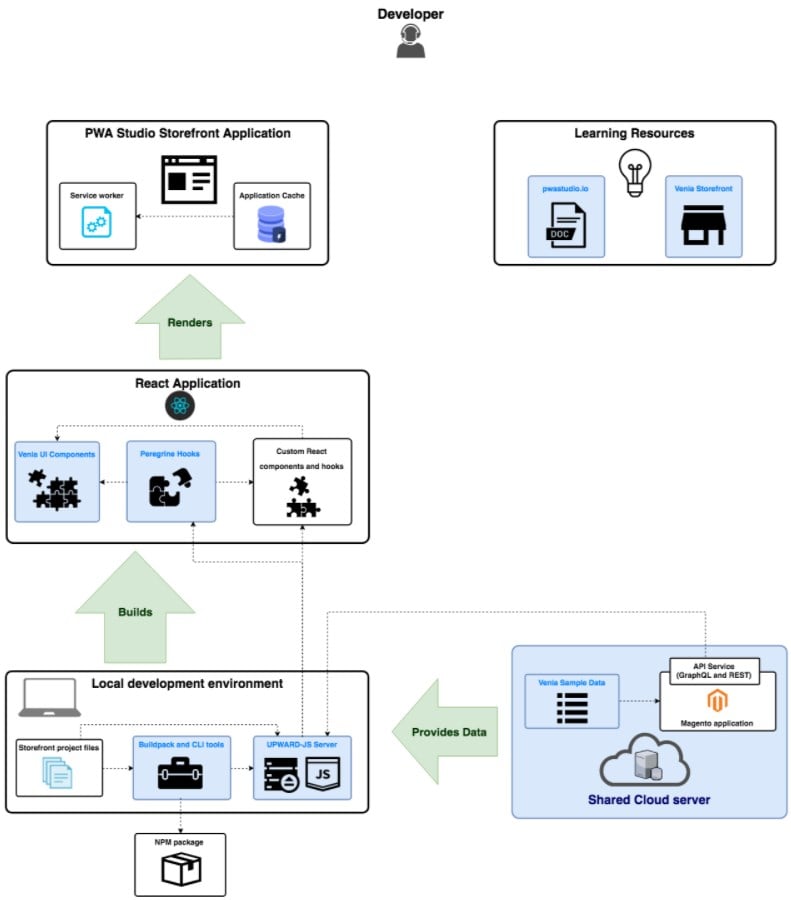
All these and other features of Magento 2 PWA provide both shoppers and developers with an enhanced user experience.
-
Wider application of augmented and virtual reality
As the gap between B2C and B2B worlds is getting smaller, B2B buyers get more interested in expanding their experience with innovative technologies. Such tech as augmented reality (AR) and virtual reality (VR) will become more popular with B2B suppliers as they allow for engaging customers and making their shopping experience more comfortable.
AR and VR can be successfully applied in marketing campaigns by adding interactive elements to the user experience. These technologies also have a wider spread in product presentations, allowing prospects to “try out” products digitally before making a purchase decision. Simulating product design in 3D before creating a physical prototype helps producers significantly cut expenses. AR and VR tools also find application in architecture and real estate, e.g., in construction site tours or designing complex structures.
The further development of VR and AR tech can bring companies many advantages and help them win the competition, as more B2B customers will prefer to make their purchases on websites with augmented reality functionality and explore products in the virtual world. The COVID outbreak creates more reasons for customers to switch to virtual reality instead of visiting physical shops.
Magento provides numerous possibilities for customizing online stores built on the platform. Broader options can be achieved by implementing innovative solutions developed by the global Magento community within . One of the innovations that incorporate the augmented reality functions on the Magento platform was developed for the . The solution allows mobile shoppers to see how a product looks in the real world via its 3D model. also improves customer experience by allowing shoppers to explore products within a physical space before making a purchase. Another beneficial solution based on AR allows customers to “try” clothes or shoes to find out the right size using their phone camera and a .
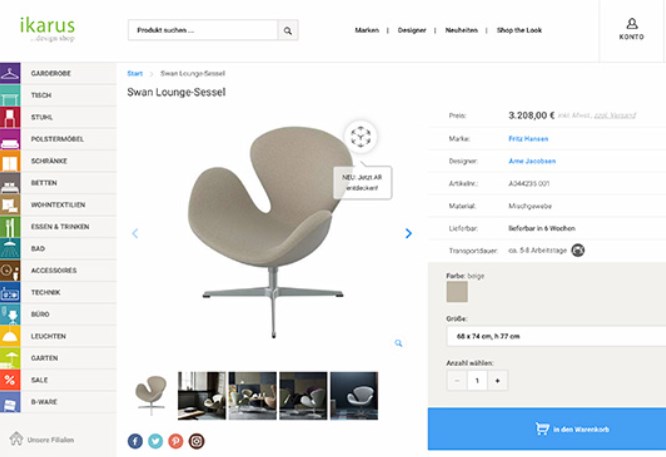
As for , a breakthrough innovation was developed for an outdoor furniture seller. With the tool, customers can explore a 3D 360-degree environment using a VR headset and a mobile application.
-
Sales and marketing alignment
Experts more often relate the inefficient use of resources and stagnation in a company’s revenue with the misalignment of sales and marketing teams. That’s why many B2B business owners start considering sales and marketing alignment as one of the highest priorities after lead generation and customer conversion. In both sales and marketing, the main goal is to drive more sales and increase revenue. By syncing relevant departments, a B2B seller can drastically improve its company’s performance and experience business growth in the long term.
As a result, the term “Smarketing” emerged, meaning that a company can have a single department that combines sales and marketing efforts in its seamless work. To catch up with the new trend, software providers develop digital tools that incorporate the concept of marketing and sales alignment. It allows companies to integrate sales, marketing, and customer service into a single platform to align the goals of all involved departments.
has analyzed data from various companies and found out that the ones with aligned sales and marketing teams see a 32% increase in the annual revenue. Besides, they are more successful in retaining existing customers (by 36%, according to the research). Other positive effects of aligning sales and marketing in a B2B business are increased brand awareness, customer conversion, and ROI (return on investment). By making your sales and marketing departments act in unison, you don’t only achieve higher conversion rates but also generate more high-quality leads.
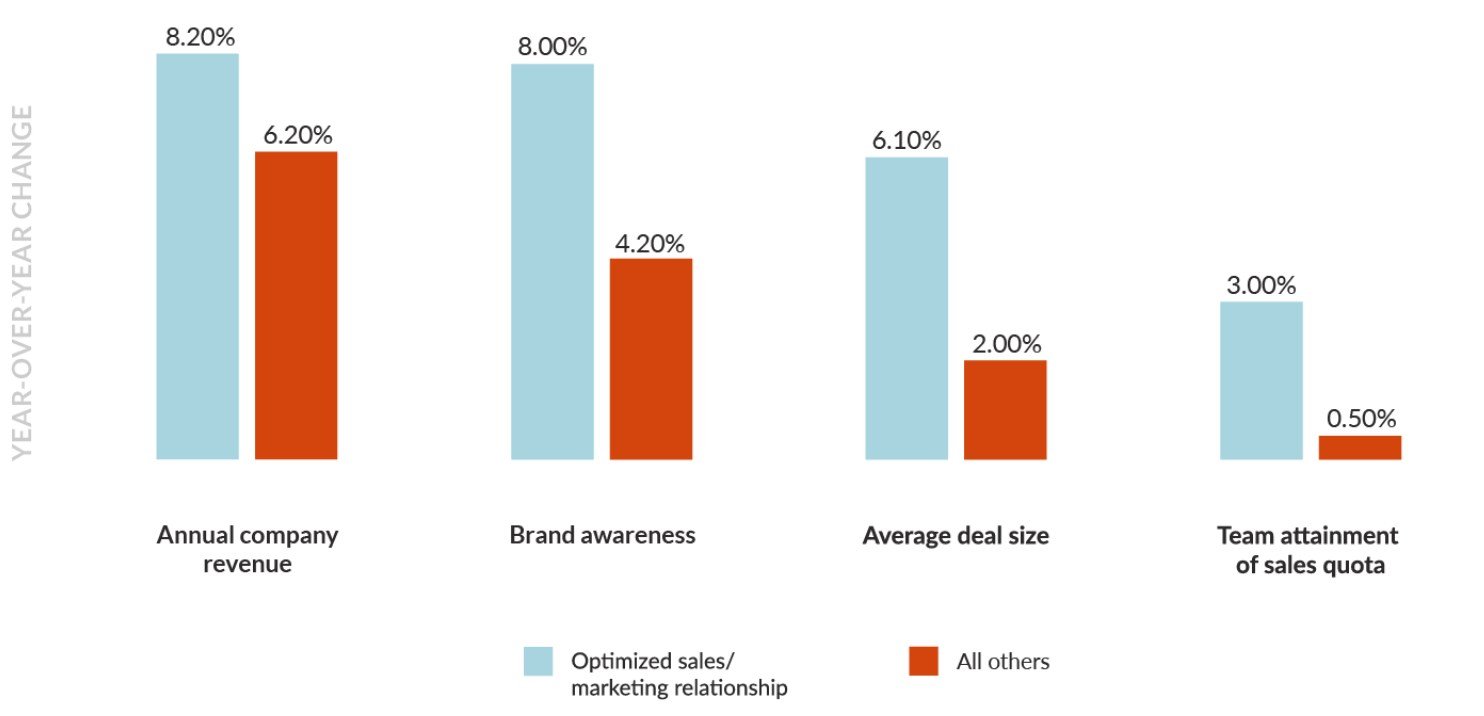
-
Omnichannel experience
As a new B2B buyer becomes more independent in their research of products and services they are planning to buy, providing seamless customer experience across various channels is one of the top priorities for B2B companies. It is also important to keep in mind that customers’ preferences differ – while some of them make most of their purchases online and try to minimize physical contact in their buyer journey, others would like to have in-person interactions and go for the pick up in store option.
Modern shoppers use various devices and digital channels to look for necessary products on a daily basis, so your ecommerce platform should be adapted to the web, mobile, and social media channels. The usage of Instagram, Facebook, and other social platforms has recently increased in B2B ecommerce, and social media presence will be even more important in the coming years. Many companies have successfully applied social media tools to create marketing campaigns for a wider customer reach, set an additional communication channel with clients and prospects, and analyze social trends.
If you want to improve the online visibility of your B2B business brand and increase customer engagement, including an omnichannel strategy in your business plan is a wise decision. When considering an integrated ecommerce solution to implement in your business, it is important to ensure a frictionless UX across all touchpoints.
Magento Commerce provides merchants with the tools for streamlining order management and fulfillment with omnichannel experiences. With Magento API and relevant third-party extensions, a vendor can implement further customizations on its site to provide customers with flexible fulfillment options, like ship-from-store, BOPIS, and others. Besides, sellers get the possibility to establish distribution centers across their stores, suppliers, and partners for more efficient inventory management. By implementing Magento Commerce solutions for omnichannel, you can meet the B2B buyers’ demand for a personalized shopping experience and convenience during all stages of their purchase journey.
-
Shift to digital supply chain management
The COVID-19 outbreak had a huge impact on supply chains globally, and most B2B ecommerce companies have been affected to some extent. Companies that work with manufacturers located abroad experience a bigger influence, which stimulates them to become more flexible in their supplies management. It forced B2B sellers to reconsider the capacities of their own distribution centers and reduce dependence on supplies from other countries, especially China.
In order to remain competitive in the changing environment, prudent B2B marketers shift their focus to implementing digital strategies in their supply chain framework. By understanding the current challenges in their supply chain and building a new supply model taking into account the features specific to their business, B2B ecommerce companies can manage inventory more efficiently and meet their clients’ needs.
The pandemic puts safety higher than fulfillment, making B2B sellers look for new approaches to delivering a frictionless customer experience and arranging backend operations to mitigate a health threat. It concerns organizing the workflow in warehouses, when, e.g., new methods for shipping products with limited contact between people are applied. Operating your B2B business on an ecommerce platform that allows extending doorstep delivery options and implementing contactless operations is a solution for building a trustful relationship with your clients.
Magento allows for seamless integration with ERP systems, enabling ecommerce merchants to sync orders, inventory, customer data, and shipping information between two different platforms. By integrating Magento with ERP, a seller gets near-real-time data, which helps mitigate an order-inventory mismatch. By connecting your ERP system to the ecommerce platform, you also ensure that customers get more accurate product pricing and availability in stock.
Magento allows integrations with various ERP systems, including Microsoft Dynamics, NetSuite, SAP, Oracle, and more. If you are looking for extended possibilities for synchronizing a third-party system, like CRM, ERP, PIM, or others, we recommend installing Improved Import & Export for Magento 2 and its add-ons – SAP Business One Integration add-on and MS Dynamics Integration add-on.
The SAP Business One integration add-on uses API connection to sync data between two systems and enables users to establish a two-way exchange of the following information:
- full product catalog;
- order and sales data;
- customer details;
- prices;
- B2B companies, quotes, requisition lists, and shared catalogs.
-
B2B marketplaces are growing in popularity
Before making a buying decision, consumers would most likely seek and compare all possible options. Due to this fact, online marketplaces are taking bigger space as a B2B buyer’s main destination for making a purchase. These platforms offer a wider selection of sellers and products, providing customers with a more convenient digital shopping experience and the possibility to find everything they need in one place.
Online B2B marketplaces started dominating the market largely because of the success of big industry players like Amazon and Alibaba. Analysts from expect that the revenue of Amazon Business, Amazon’s business-to-business marketplace unit, will reach $31 billion by 2023. According to the by WBR Insights, 87% percent of B2B customers are making their business purchases on marketplaces.

The growing popularity of online marketplaces makes it critical for B2B companies to develop an appropriate strategy to expand their reach to potential clientele. For some sellers, joining an existing marketplace might be the best solution, while bigger companies prefer to develop their own vertical marketplace to offer products in their specific niche.
Magento enables merchants to build a marketplace on the basis of their website. Magento Marketplace has a rich selection of third-party modules that allow turning one’s online shop into a multi-vendor marketplace with a rich set of features for both sellers and admins. Another opportunity to extend your customer reach and embrace new sales channels is connecting to popular marketplaces.
Magento provides seamless integration with Amazon, synchronizing product listings, inventory, and order information between two systems and turning Magento Admin into a hub for managing all related activities. By integrating with widely used marketplaces, you can easily enter new markets and boost your sales.
The extended functionality for omnichannel product data management is offered by the Improved Import & Export Magento 2 extension. The module acts as a universal import/export integrator that allows moving data between Magento and a third-party platform in both directions, applying mapping, and more.
-
Decision making based on data analytics
In order to ensure the continuous growth of your B2B business, it is important to rely on data when building sales and marketing strategies. By analyzing customer interactions with your business at every stage of their buying cycle, you will understand how to adjust your marketing efforts to deliver a personalized experience to your clients.
As the practice of many B2B companies shows, the most valuable source of data for decision making is customer feedback. By analyzing data gathered from customers who stopped working with you, you will understand what needs to be done to solve the issues they have faced. For example, if you find out that a buyer was not satisfied with your customer service, this is where you need to shift your focus. However, if a client mentioned a lack of necessary features in a product, you might need to think about how to improve your products to meet customers’ demands.
One of the great ways to collect customer data in real time is building a direct relationship with your clientele. It can be achieved by establishing a direct-to-consumer sales channel. By combining real-time customer data with purchase history and analyzing it with the view of customer expectations, you can apply a personalized approach to your marketing activities. By making data-driven decisions, you will provide your clients with tailored products and services, keep customers engaged, and increase loyalty to your business.
Online stores operating on Magento 2 are integrated with a number of analytical tools out of the box, including Google Universal Analytics, Google Tag Manager, and Google AdWords. Google Analytics allows adding custom metrics for tracking customers’ interactions with a seller site and provides support for offline mode and mobile. With Google AdWords, marketers can create ad campaigns and track their response on a dedicated dashboard to measure conversions.
As for Google Tag Manager, it is a unique feature of Magento 2 Commerce Edition that lets users add tags (code snippets) to track conversions and other valuable data related to marketing campaigns. The gathered information is automatically transferred to Google Analytics, Enhanced Ecommerce, and other third-party analytics solutions. This way, store owners get a better understanding of their promotions’ reach and efficiency.
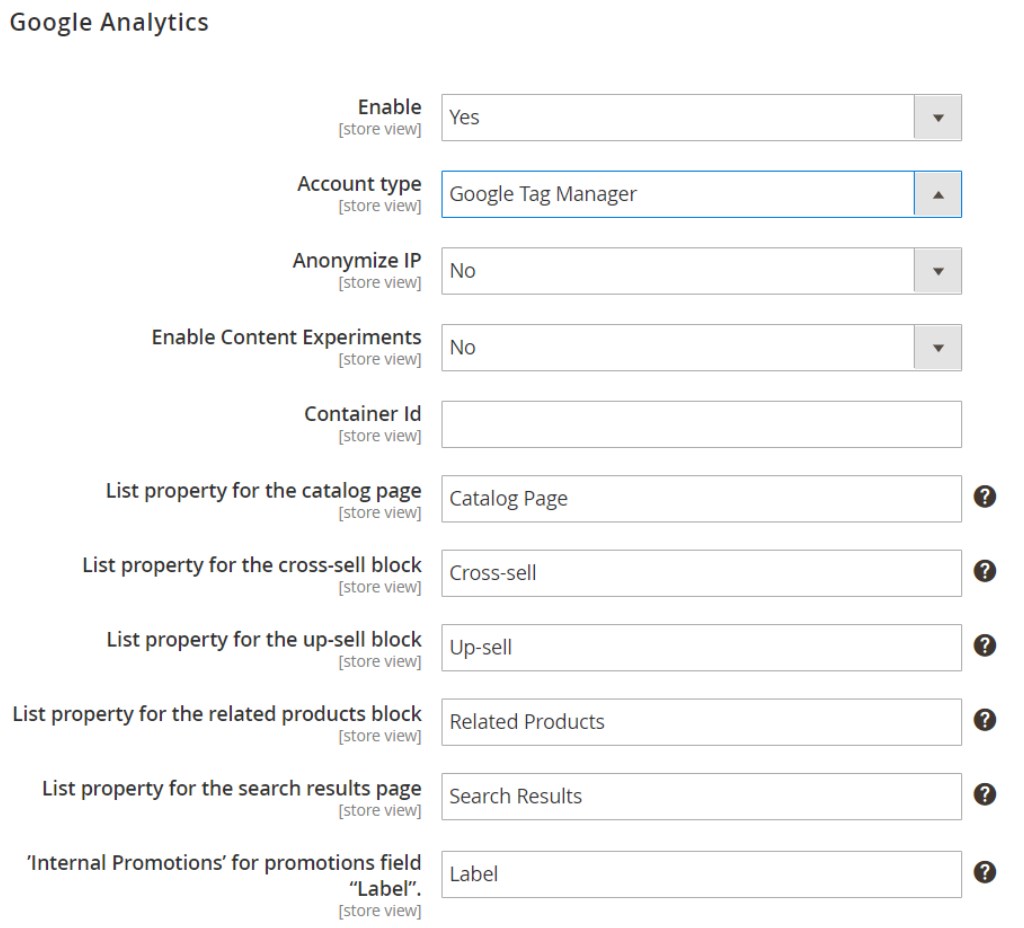
Store managers can reach extended content optimization possibilities and analytical tools by installing one of the third-party analytics and reporting Magento 2 extensions.
Final Words
As ecommerce undergoes transformational changes, it becomes essential for both B2B and B2C companies to adapt their strategies to the changing business environment. Since the future of B2B ecommerce largely relies on technology expansion, digitization of business operations and adoption of digital strategies come to the foreground. With the business-to-business sector resembling more of B2C, it is crucial to ensure a frictionless user experience across all devices and build trust to your business as a reliable and keeping up to date partner. By implementing an omnichannel and buyer-centric approach in your marketing strategy, you have higher chances for gaining a bigger market share and building close relationships with your clients in the long term. By considering the B2B ecommerce trends described above and optimizing your business tactics in line with them, you aim for continuous growth and revenue acceleration.
If you operate your online store on Magento 2, integrating with CRM, ERP, and other third-party systems can bring your business to a whole new level and help to stay ahead of your competitors. If you are looking for seamless Magento integration with other solutions, get in touch with us at our .


